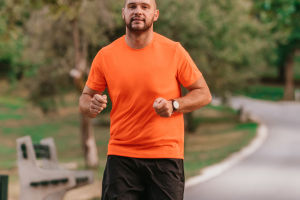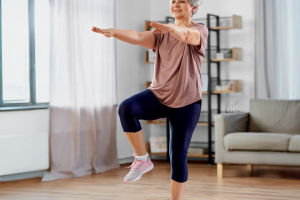Have you ever watched a gymnast hold a perfect handstand or perform a graceful routine on the balance beam and wondered, "How do they maintain such incredible balance?"
Gymnasts' ability to control their bodies with precision seems almost superhuman.
This article will explore the key factors and training methods that help gymnasts develop this extraordinary balance, revealing the dedication and science behind their skill.
The Importance of Core Strength
One of the most fundamental elements for achieving balance in gymnastics is a strong core. The core muscles — including the abdominals, obliques, lower back, and pelvic muscles — act as the body's stabilizer. Gymnasts spend countless hours strengthening these muscles through targeted exercises like planks, hollow holds, and leg lifts.
A powerful core allows athletes to maintain control during complex moves and resist unwanted shifts in their center of gravity.
Developing Proprioception and Body Awareness
Balance is not just about muscle strength; it heavily relies on proprioception, which is the body's ability to sense its position in space. Gymnasts cultivate heightened body awareness through repeated practice and drills. For example, training barefoot helps improve the sensory feedback from the feet, which is essential for subtle balance adjustments. Coaches often use exercises that challenge stability, such as balancing on one leg with eyes closed or using unstable surfaces, to sharpen this internal sense.
Progressive Balance Training Techniques
Gymnasts build balance progressively, starting with simple exercises and advancing to highly challenging skills. Early training includes static holds like handstands against a wall and balancing on beams close to the ground. As skills improve, gymnasts perform moves on narrower beams or introduce dynamic elements such as turns and jumps.
This gradual increase in difficulty strengthens both physical and mental balance capabilities, preparing athletes for high-pressure performances.
The Role of Flexibility and Joint Control
Flexibility plays a critical role in balance by allowing gymnasts to maintain proper alignment and make smooth corrections. Tight muscles or restricted joints can throw off balance and lead to falls. Through consistent stretching routines and mobility exercises, gymnasts ensure their muscles and joints can move fluidly. Controlled flexibility also helps them distribute weight evenly and adapt quickly during routines.
Mental Focus and Concentration
Physical ability is only part of the story — mental focus is equally crucial for gymnastic balance. Concentration helps gymnasts tune out distractions and react instantaneously to shifts in body position. Techniques such as visualization and mindfulness are often incorporated into training to enhance mental clarity. A focused mind combined with trained muscles allows gymnasts to maintain poise even in complex, high-risk maneuvers.
Expert Insights: The Science of Balance Training
Experts in sports science emphasize that balance is a complex interaction of neuromuscular coordination, sensory feedback, and cognitive processing. According to Dr. Emily Harrison, a specialist in athletic performance, "Effective balance training combines strength, proprioception, and mental skills, tailored progressively to the athlete's level. Gymnasts exemplify this through disciplined practice and continuous adaptation."
Research also shows that balance exercises can improve overall athletic performance and reduce injury risk, highlighting their importance beyond gymnastics.
Conclusion: The Journey to Perfect Balance
Achieving the incredible balance gymnasts display is the result of dedicated physical training, refined sensory awareness, flexibility, and sharp mental focus. It is a combination of science and artistry, forged through persistence and passion. What do you think is the most impressive balance skill you've seen? Have you tried any balance exercises yourself? Share your experiences, and maybe it's time to challenge your own sense of balance!


